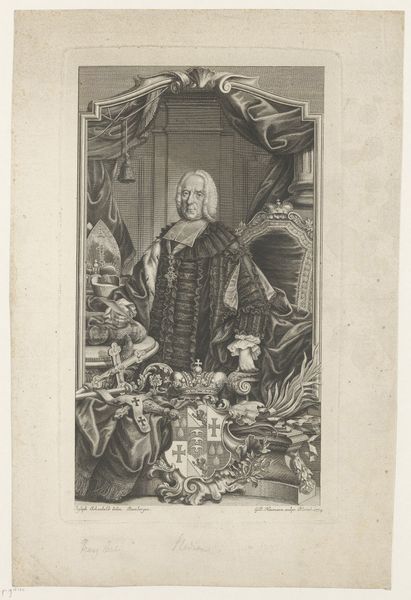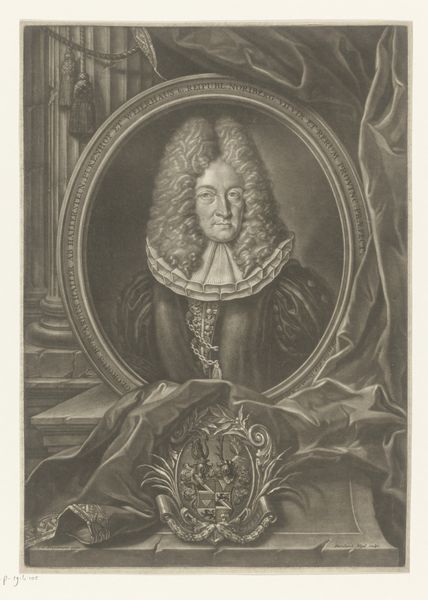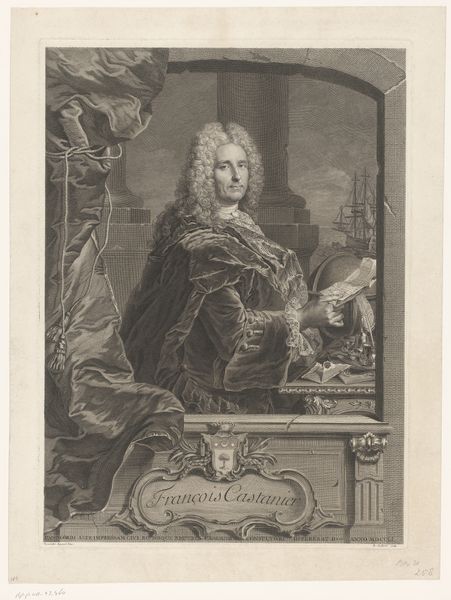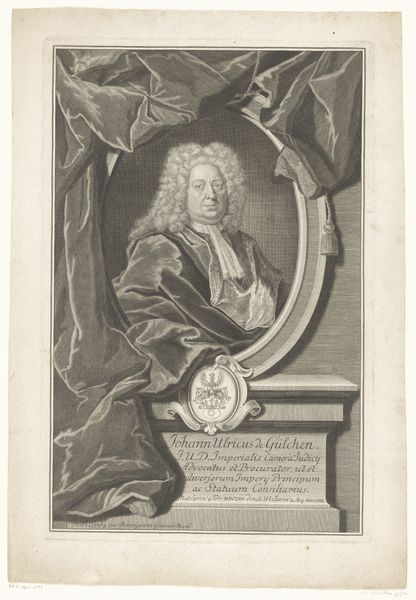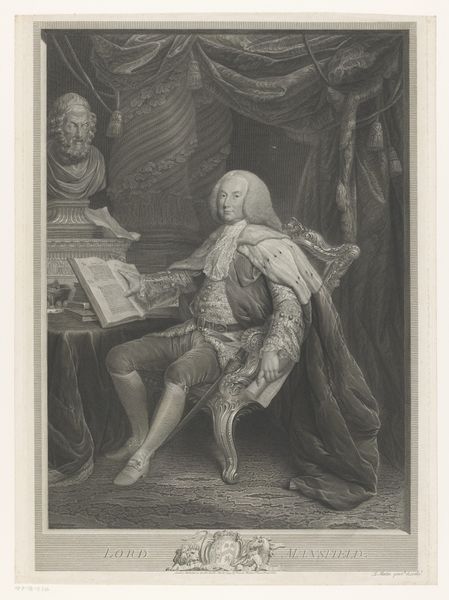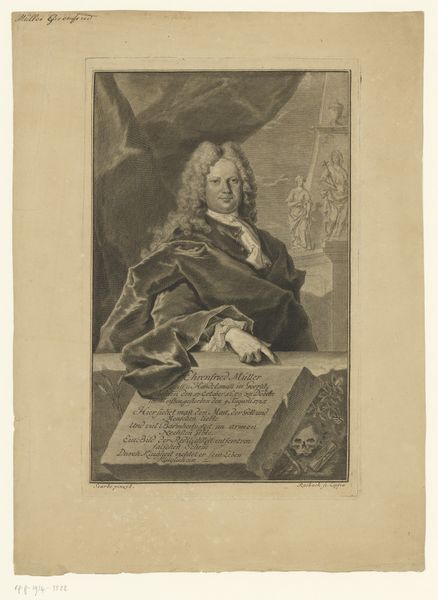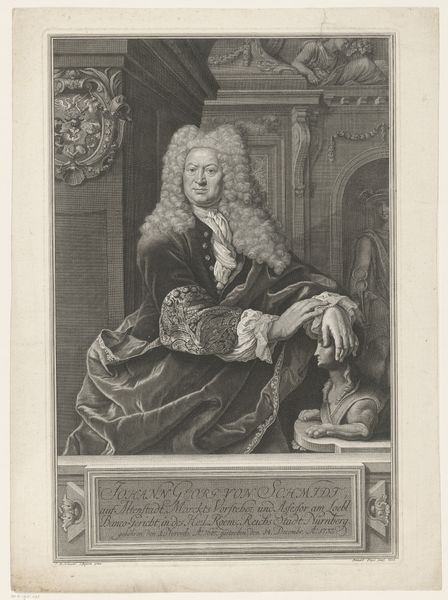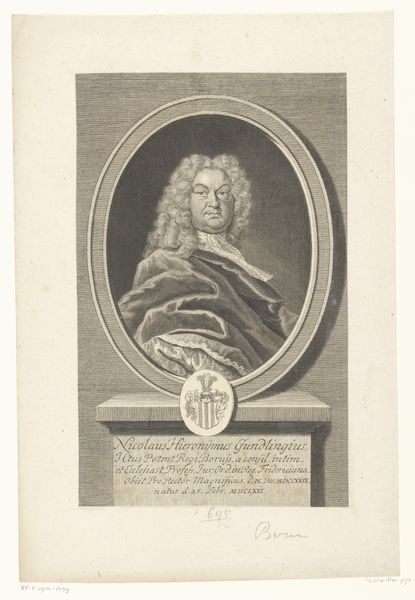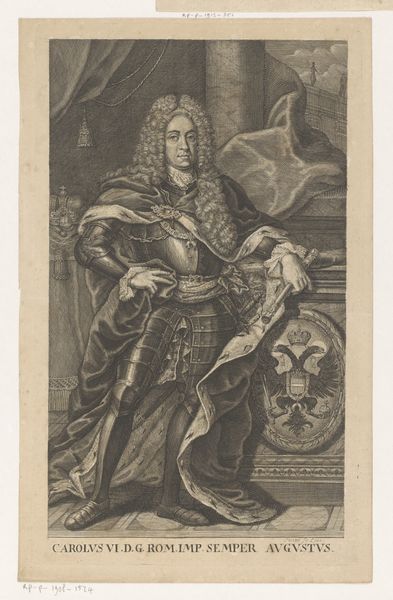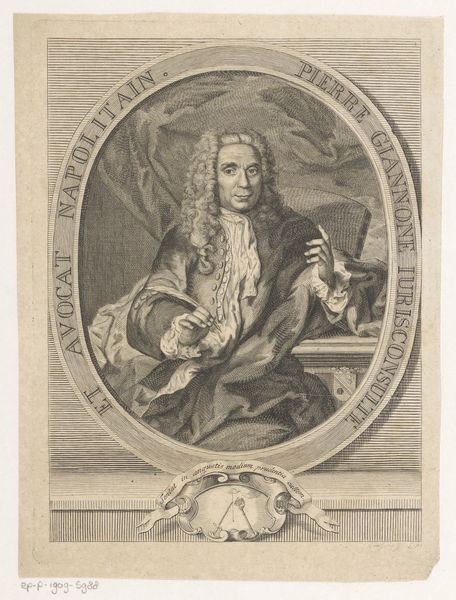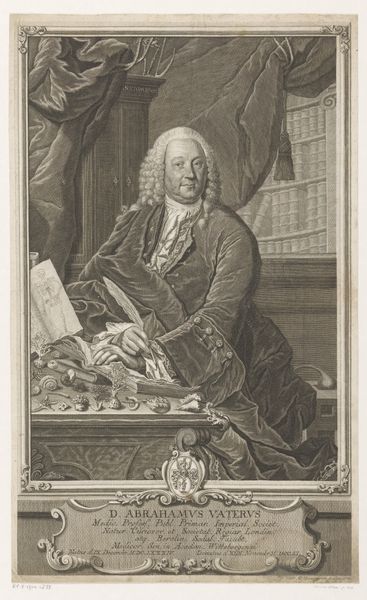
print, engraving
#
baroque
# print
#
old engraving style
#
classical-realism
#
genre-painting
#
history-painting
#
academic-art
#
engraving
Dimensions: height 520 mm, width 340 mm
Copyright: Rijks Museum: Open Domain
Curator: The 1732 engraving, "Portret van Adam Christian Thebesius" by Michael Heinrich Rentz, presents us with a fascinating figure of the Enlightenment. What are your initial thoughts? Editor: Well, first off, it’s incredibly detailed. It almost feels staged, very deliberate. He’s surrounded by all these objects – a skeleton, books, a telescope – creating this image of a learned man, but it feels a little… performative. How do you interpret that sense of constructed identity? Curator: Precisely! Consider the power structures at play here. This is a portrait intended to project a specific image of Thebesius – a physician, a scientist, a man of intellect. But who is constructing that image, and for what purpose? How does the inclusion of these objects reinforce societal expectations of men of science at this time, while perhaps excluding other identities or ways of knowing? Editor: So, you're saying it's not just a neutral depiction, but an active construction of an identity within a very specific social framework. Like a conscious performance to embody a certain idea of "enlightened" masculinity? Curator: Exactly. Think about the scientific revolution and its emphasis on rationality, objectivity. Who gets to participate in that revolution, and whose perspectives are marginalized or erased? Does the portrait invite dialogue with marginalized groups of the time, such as women in medicine or natural philosophers from other cultures? And how do we grapple with these questions when interpreting the image today? Editor: I see what you mean. It forces you to think about whose stories are being told, and whose aren't. Thanks! Curator: It reveals so much when we actively question the narratives these artworks seem to readily supply. Thank you.
Comments
No comments
Be the first to comment and join the conversation on the ultimate creative platform.


